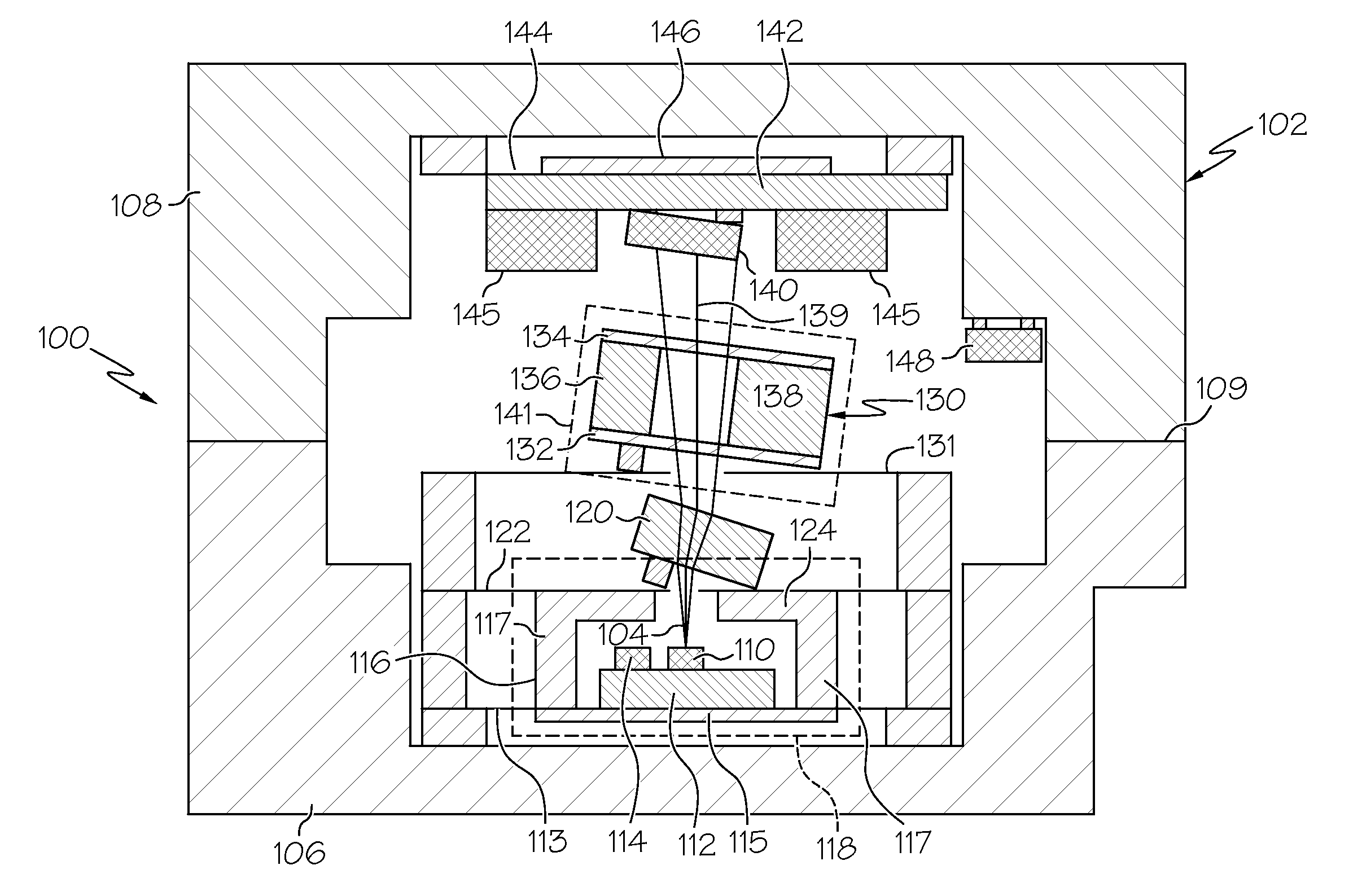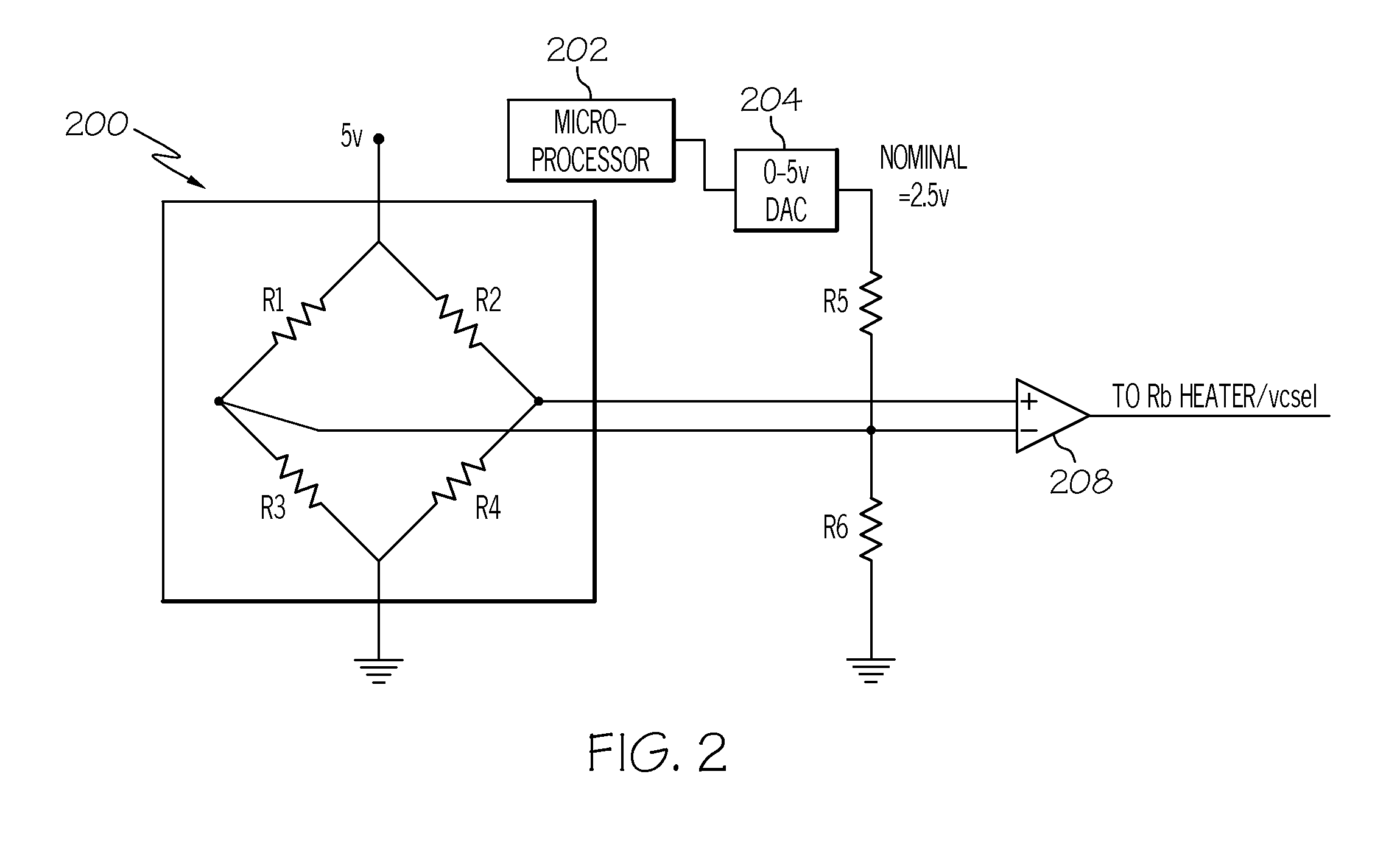Chip-scale atomic clock with two thermal zones
a technology of atomic clocks and thermal zones, applied in the field of chip-scale atomic clocks with two thermal zones, can solve the problems of temperature sensitivity of csacs that can still be a problem, csacs become inaccurate, and components to change the temperatur
- Summary
- Abstract
- Description
- Claims
- Application Information
AI Technical Summary
Benefits of technology
Problems solved by technology
Method used
Image
Examples
Embodiment Construction
[0014]In the following detailed description, embodiments are described in sufficient detail to enable those skilled in the art to practice the invention. It is to be understood that other embodiments may be utilized without departing from the scope of the invention. The following detailed description is, therefore, not to be taken in a limiting sense.
[0015]A chip-scale atomic clock (CSAC) is provided that has a two-thermal zone configuration, including a first thermal zone for a laser die, such as a vertical-cavity surface-emitting laser (VCSEL), and a second thermal zone for a vapor cell, in the CSAC. The first thermal zone provides a first operation temperature at a first stability point associated with the laser die, and the second thermal zone provides a second operation temperature at a second stability point associated with the vapor cell.
[0016]The two-thermal zone configuration of the chip-scale atomic clock allows the vapor cell and laser die to be operated at their most sta...
PUM
 Login to View More
Login to View More Abstract
Description
Claims
Application Information
 Login to View More
Login to View More - R&D
- Intellectual Property
- Life Sciences
- Materials
- Tech Scout
- Unparalleled Data Quality
- Higher Quality Content
- 60% Fewer Hallucinations
Browse by: Latest US Patents, China's latest patents, Technical Efficacy Thesaurus, Application Domain, Technology Topic, Popular Technical Reports.
© 2025 PatSnap. All rights reserved.Legal|Privacy policy|Modern Slavery Act Transparency Statement|Sitemap|About US| Contact US: help@patsnap.com



